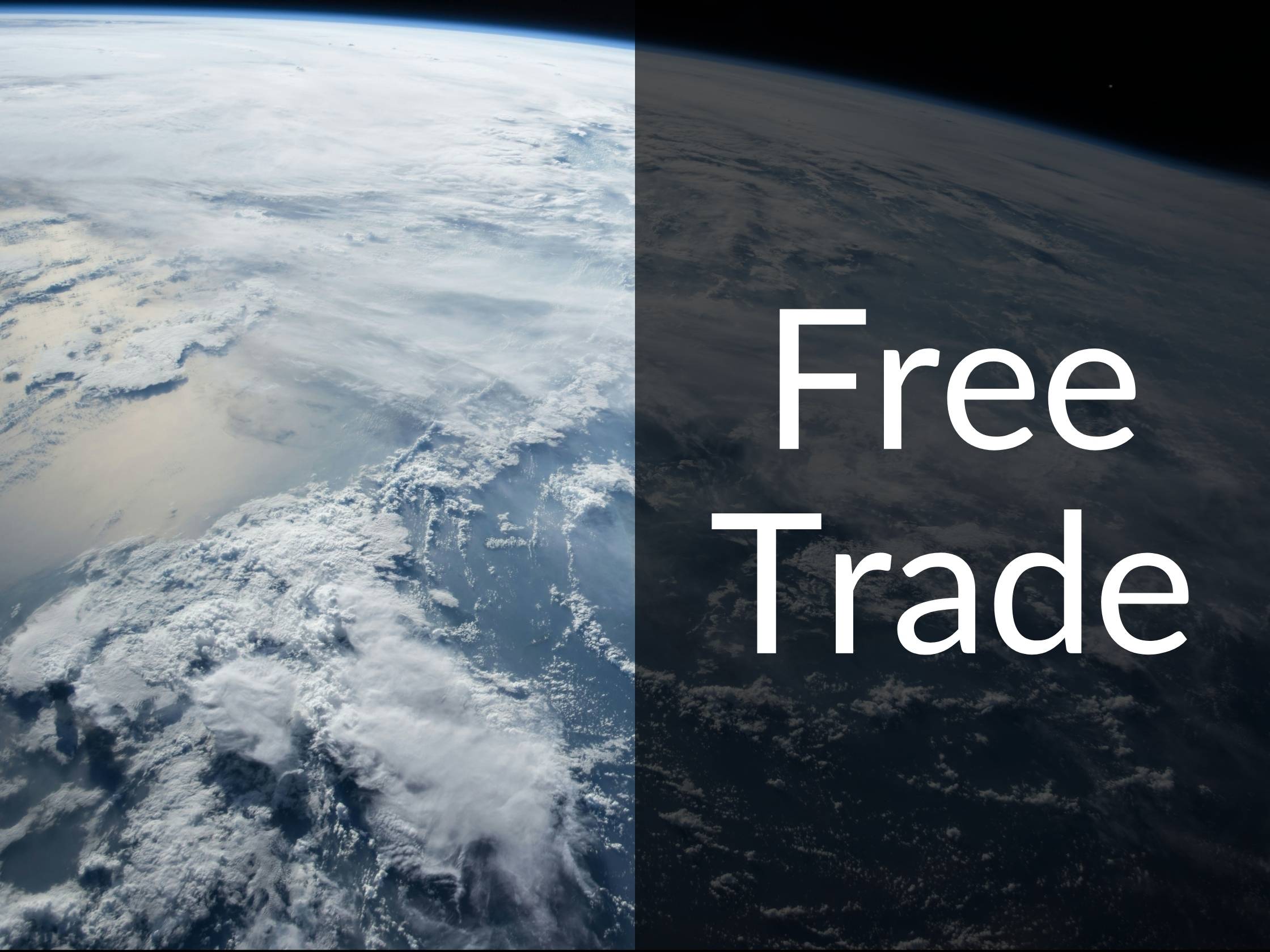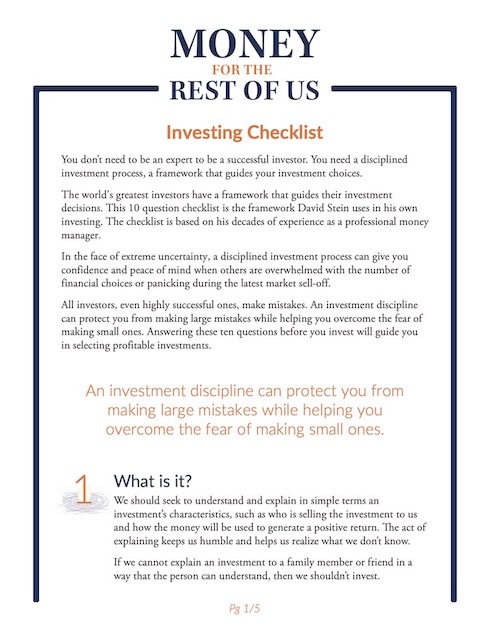What will the impact be now that the U.S. has one of the highest tariff rates in the world?

Topics covered include:
- Why the Trump administration raised tariffs
- How the last round of U.S. tariffs led to higher prices and lower economic growth
- Four ways the world remains close to record connectivity
- Who have been the winners and losers from global trade
- What will be the impact of this trade war
Show Notes
Tariff rate, most favored nation, simple mean, all products (%)—World Bank Group
Donald Trump’s tariffs will fix a broken system by Peter Navarro—The Financial Times
DHL Global Connectedness Tracker—DHL
Objective Knowledge: An Evolutionary Approach by Karl R. Popper—Oxford University Press
GDP per capita (constant 2015 US$)—World Bank Group
Real Median Household Income in the United States—FRED
Episode Sponsors
Delete Me – Use code David20 to get 20% off
Related Episodes
515: Tariffs and the Mar-a-Lago Accord: What Trump Really Wants
516: What Trump Wants Part 2 – How Trade Deficits and Capital Flows Can Harm or Help Countries
427: Did the Tariffs Work? The Trade War Five Years Later
212: Trade Wars Increase Prices and Poverty
Transcript
Welcome to Money for the Rest of Us. This is a personal finance show on money, how it works, how to invest it, and how to live without worrying about it. I’m your host, David Stein. Today is episode 519. It’s titled, “Is This the End of Globalization and Free Trade?”
Financial Market Reaction to Tariffs
Last week, the Trump administration announced a massive expansion of tariffs on imports to the U.S. The scope of these tariffs was much greater than financial markets anticipated. The U.S. stock market dropped over 10% in two days. The VIX volatility index, the implied volatility priced into the S&P 500, soared to over 45.
Back in late January, it was at 15. When markets fall, crash in some extent, 10% drop, volatility spikes—that causes hedge funds and other investors, algorithms to start selling, because there are margin calls. So they’re reducing risk, reducing leverage. And even safe assets can get hurt.
Last Friday, the 10-year Treasury yield jumped 0.19 percentage points, the biggest daily increase. The yield goes up, the value of bonds fall. The biggest since September 2022. 30-year Treasury yields jumped 0.21 percentage points. That’s the biggest move since March 2020.
Want the Trump Administration Wants
In episode 515 and 516 of the podcast, we described what the Trump administration wants with these tariffs. Why are they doing it. We quoted U.S. Treasury Secretary Scott Bessent and Stephen Miran, the chairman of the Council of Economic Advisers—they want a narrower trade deficit, more exports, fewer imports. They want a lower capital account surplus, a drop in the amount of investment flows coming into the U.S. They would prefer a weakened dollar, so that U.S. exports are more competitively priced. They want more manufacturing in the U.S.
President Trump’s senior counselor for trade and manufacturing, Peter Navarro, reinforced those points in a Financial Times editorial this week. He pointed out that the U.S. cumulative trade deficit in goods from 1976 to 2024 that transferred $20 trillion of American wealth into foreign hands.
In other words, $20 trillion aggregate trade deficit is the mere image of $20 trillion of capital that foreigners had to purchase U.S. assets. He writes, “Foreign interests have taken over vast swaths of U.S. farmland, housing, tech companies, and even parts of our food supply.”
Most Favored Nation Tariff Rates
If we look at the trade deficit of goods and services as a percent of GDP, it’s generally been around 3% of GDP. Currently, it’s 3.1%. It’s actually wider now than it was when Trump initiated tariffs in 2018. One of the things the Trump administration finds frustrating—and Navarro mentioned in his editorial—is the World Trade Organization’s, WTO’s most favored nation rule.
It requires member countries to apply the lowest tariff they offer to any one nation that’s part of the WTO. And so if a country, on average, has higher tariffs, then the U.S. is applying a lower tariff, because it has to honor this most favored nation status.
Now, U.S, the MFN tariff is 3.3%. China is at 7.5%. Thailand and Vietnam are near 10%, Navarro points out, with India at 17%. I pulled up—and I’ll link to it—some World Bank data. The highest, most favored nation average tariff is the Bahamas, at 31.5%. Bermuda’s at 23.4%. Sudan is at 21.8%. I mention that because estimates—and this is from Capital Economics—that if these new U.S. tariffs are applied, they’re not lowered, the average tariff rate in the U.S. as of April 9th will be 24%. Close to the highest in the world. Now, there are places where the tariffs are even lower than U.S. at 3.5%. Canada is at 3%, Australia is at 2.4%, and Hong Kong’s at zero.
Now, the administration isn’t just frustrated at the level of tariffs, but they believe there are non-tariff weapons that other countries use to, as they say it, or Navarro says it—strangle American exports. And he lists out currency manipulation, value-added tax distortion, dumping export subsidies, state-owned enterprises, IP theft, discriminatory product standards, quotas, bans, opaque licensing regimes, burdensome customs procedures etc.
It’s somewhat unbelievable the size of these tariffs. 24%. That’s higher than the tariffs back in the 1930s. Now, our question is, is globalization done? Globalization remains near an all-time high. And when we talk about globalization, global connectedness, certainly, trade of goods and services is there. And the flip side of trade, capital, investment flows, but also information.
As a Money For the Rest of Us Plus member, you are able to listen to the podcast in an ad-free format and have access to the written transcript for each week’s episode. For listeners with hearing or other impairments that would like access to transcripts please send an email to team@moneyfortherestofus.com Learn More About Plus Membership »
